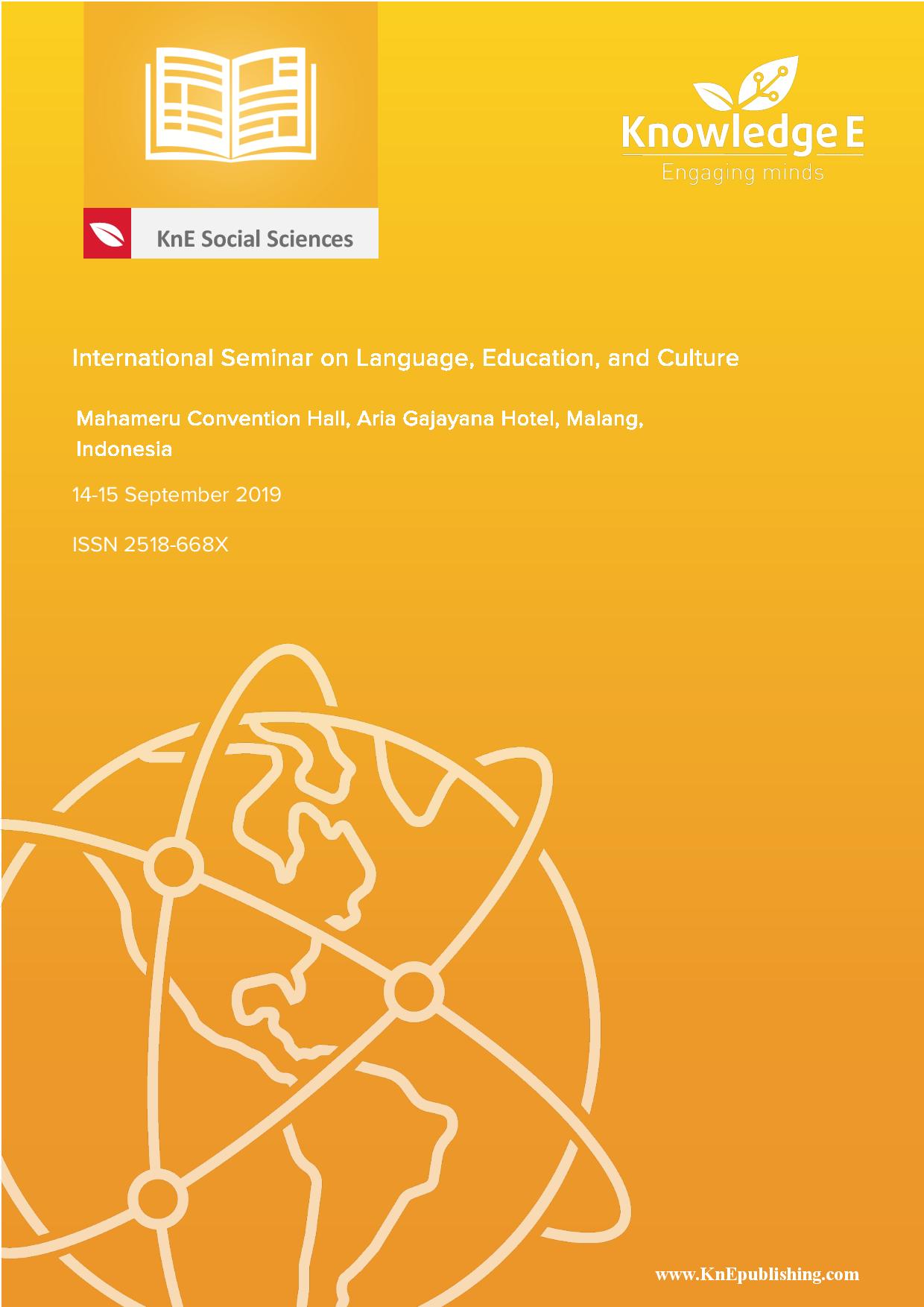A Phonetic-Accuracy-Based Learning Model of Kalam to Improve Students’ Arabic Speaking Skill
DOI:
https://doi.org/10.18502/kss.v4i4.6477Abstract
This research aims to develop a learning model of Arabic speaking based on phonetic accuracy. The specific objectives of the study are (1) to develop instructional materials of Arabic speaking based on phonetic accuracy, and (2) to evaluate the effectiveness of the use of the product to improve the quality of Arabic speking. The research was conducted in two steps; they are: developmental research which focuses on the development of instructional materials of Arabic speaking based on phonetic accuracy, and evaluation research on the use of the materials which have been prepared for further revision and dissemination. The results of this research are (1) the completion of Arabic speaking textbook based on phonetic accuracy that comes with the instructions for use for teachers and students, and (2) the results of the tryout showed that this textbook has a good value of efficiency, effectiveness and attractiveness in terms of its general description, presentation of the material, and types of exercises, and is thus worthy tobe used in Arabic speaking course.
Keywords: Arabic teaching, kalam, instructional material, phonetic accuracy
References
Al-Fauzan, AR.; Mukhtar A.H.; Muhammad A.K.; Muhammad AR. 2003. Al-Arabiyyah baina Yadaik. Riyadh: Muassasah al- Waqf al Islami.
Mohamed, Mamduh N. 2002. Al-Arabiyyah Jisr li al-Tsaqafah al-Islamiyyah.Jeddah: Dar Al-Andalus Al-Khadra’a
Shiny, Mahmud I; Nashif M.A.; Mukhtar A.H. 1983. Al-Arabiyyah lin Nasyi’in. Riyadh: Wizarat al Ma’arif
Al-Kitab al-Asasi fi Ta’lim al-Lughah al-Arabiyyah,
Al-Mahdawi, Yusri. 2000. Marahil I’dad al-Ma:ddah at-Ta’limiyyah fi al-Ta’lim ‘an Bu’d. In A’dla’ Hai’ah at_Tadri:s Jami’ah Quds al-Maftuhah. Inta:j al-Mawad at-Ta’limiyah li Baramij Ta’lim ‘an Bu’d. Marocco: Isesco
Boon, Andy & Darren Halliday. Discover Conversation; Teacher’s Book. Halico Creative Education. Online: https://halico.jp/discover-conversation. accessed July’ 13, 2019
Effendy, A. Fuad & Moh. Ainin. 2012. Modul Pendalaman Materi Bahasa Arab [Module on Understanding Arabic Language Material]. Malang: PSG rayon 115 Universitas Negeri Malang
Effendy, A. Fuad. 2005. Peta Pengajaran Bahasa Arab di Indonesia Dewasa Ini [Mapping of Arabic Language Teaching in Indonesia Today]. [Paper Presented in an International Seminar]: Raf’u Mustawa al-Lughah al-Arabiyah wa Dauriha fi Muwajahat al-Tahaddiyat fi ’Ashril Awlamah wa Mayadin al-Amal. Makassar 8-10 September 2005.
Fak. Sastra UM. 2012. Katalog Jurusan Sastra Arab UM edisi 2008. Fak. Sastra UM
FlegeI, JamesEmil & JamesHillenbrand. (1987). Limits on phonetic accuracy in foreign language speech production. Online: www.jimflege.com/files/Flege_in_loup_1987.pdf Hidayat, D. 2003. Mencairkan Kebekuan Komunikasi dalam Bahasa Arab Lisan [Breaking the Ice of Communication in Spoken Arabic]. Paper Presented in National Scientific Meeting of Arabic Language III], Jakarta 4-6 September 2003
Masuhara, H. & Tomlinson, B. 2010. Applications of the Research Results for Materials Development. In Brian Tomlinson & Hitomi Masuhara (Eds). Research for Material Development in Language Learning (pp. 411-424). New York: Continuum
Miles, M. B. &Huberman, A. M. 1992. Qualitative Data Analysis. London: SagePublication
Miura, Takashi. 2000. An Analysis of ‘Aural/Oral Communication A’ English Textbooks In Japanese Upper Secondary School”. JALT Journal Volume 22, No.1, pp.6-26 published in May 2000.
Nashr, Mu’athi M. & Fauzi A. M. 2010. Thuruq Tadris al-Lughah al-Arabiyah. Ismailia: Jami’ah Qanat Suez
Nasution, A. S. A. 2006. Bunyi Bahasa [Language Sounds]. Jakarta: UIN Jakarta Press
Nunan, D. 1999.Second Language Teaching and Learning. Boston: Heinle&Heinle Publisher
Richards, J. 2001. Curriculum Development in Language Teaching.Cambridge: Cambridge University Press.
Silsilah fi Ta’lim al-Lughah al-Arabiyyah,
Tomlinson, B. & Masuhara, H. 2010. Application of the Research Result for Second Language Acquisition Theory and Research. In Brian Tomlinson & Hitomi Masuhara (Eds). Research for Material Development in Language Learning (pp. 411-424). New York: Continuum

